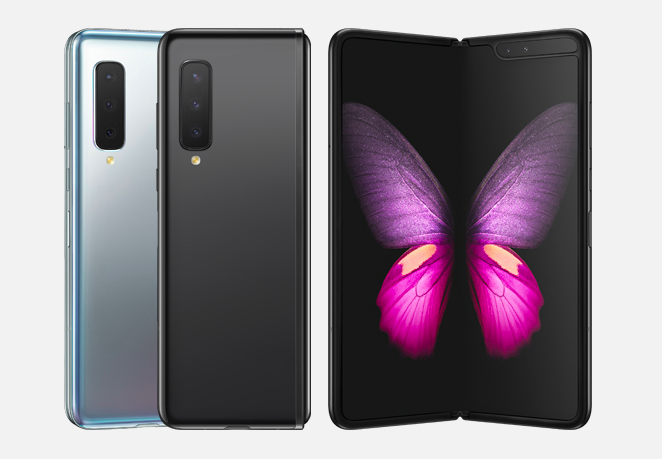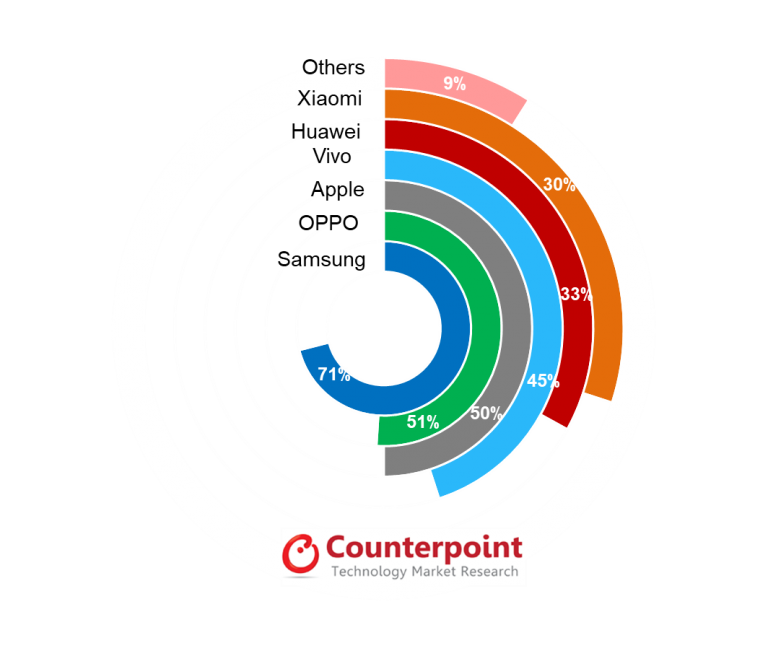According to a new report, smartphones with an AMOLED display (Active-matrix organic light-emitting diode) are expected to surpass 600 million units in sales in 2020. This is indicative of the displays explosive popularity in the past couple of years which is still on a steep rise.
Based on a Counterpoint research note, the global sale of smartphones with AMOLED screens will exceed the 600 million shipment mark by the end of 2020. It is a sizable YoY (Year-on-Year) growth of 46 percent from 2019. This rise is expected to arrive with the inclusion of AMOLED display panels in mid range segment of smartphones. Certain Chinese brands like Huawei, Vivo, Oppo, Realme, and Xiaomi are a few of the OEMs that will be making this move.

Displays are one of the most crucial parts of the overall user experience. In 2019, smartphone displays received a lot of attention in terms of features and advertising. This was done to facilitate people in replacing their older handsets for the newer and upgraded versions that had thinner bezels, smaller screen to body ratio, increased refresh rates and more. It also quickly became one of the most promoted part of a smartphone.
UP NEXT: Sony can’t keep up with overwhelming image sensor demands
Furthermore, the inclusion of certain features like in-display fingerprint scanner and and a punch-hole camera led to further growth of the AMOLED panels; which is touted to be better over its LCD counterpart due to its superior image quality, lower power consumption and even flexible form factor. Counterpoint believes that AMOLED smartphones will see increased demand, especially in China, which will lead to Chinese brands aggressively pricing their handsets.

This would bring the AMOLED screen that is generally seen in flagship models to also be found in mid tier smartphone of 2020. Currently, Samsung is the leading OEM with 45 percent of the total AMOLED smartphone shipments. The South Korean giant is followed by Apple with a 16 percent market share and Oppo with an 11 percent share. Lastly, a smartphone with OLED displays are generally placed between the $300-400 price segment but might soon be seen in sub-$200 segments as well.
UP NEXT: TSMC’s supply of 14nm chips to Huawei could be disrupted by the US
(Source)







